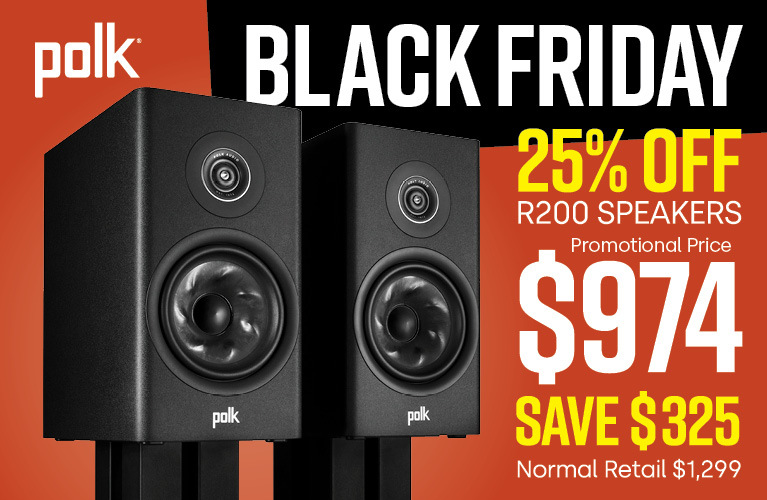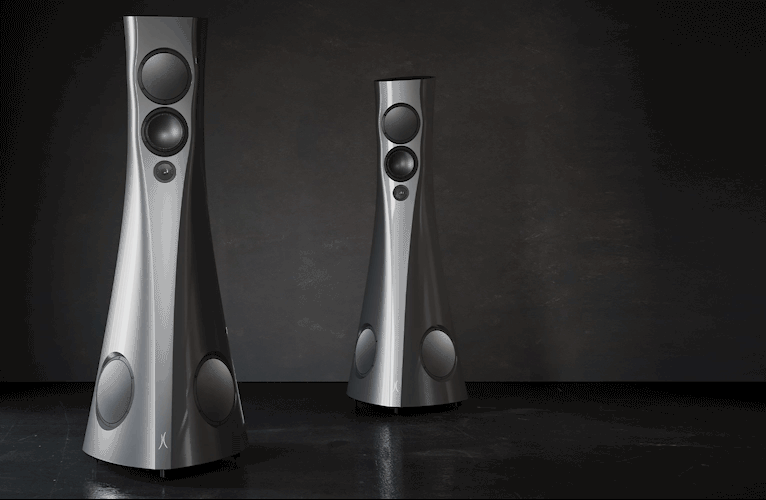This review covers two award-winning analogue products from UK company Vertere Acoustics. The highly-acclaimed Sabre Moving Magnet cartridge and its mate the equally-celebrated PHONO-1 MkII L phono stage, which also allows for Moving Coil operation.
As The World Turns
Both these Vertere Acoustics devices look resplendent in 'Mango Orange' colour which certainly stands out visually and, as this review attests, the components are stand outs sonically too.
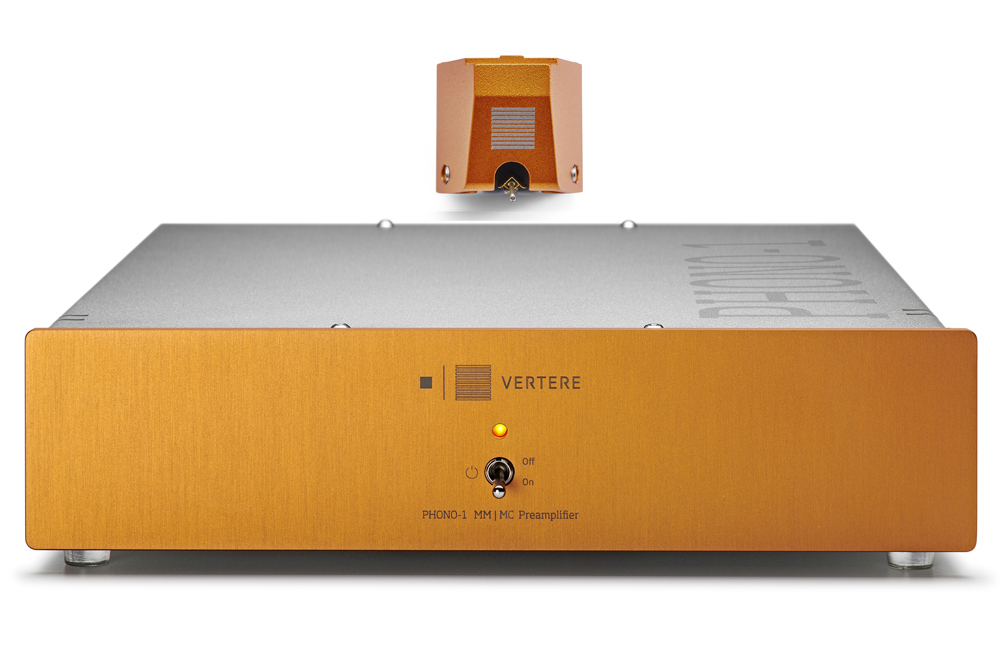
Vertere (for short) the company was formed in 2006 by founder Touraj Moghaddam (who designed the Roksan Xerxes turntable) who noted that cables seemed to be the weak link in the analogue chain. The word Vertere comes from Latin and means 'to turn or change' which underpins the philosophy of the company to refine the sound quality achieved from analogue playback. A keen innovator and experimenter Touraj Moghaddam and his engineering team spent two years in refining their first Hand Build HB cable the Vertere PULSE-HB with the technology of different sized conductors using silver or tin plated copper.
Fast forward to 2022 and Vertere products have expanded to include: cartridges, tonearms, turntables, phono amps and cables. Studio maestro Giles Martin at Abbey Road uses a Vertere MG-1 record player, SG-1 tonearm and PHONO-1 preamplifier to check vinyl acetate and test records. Giles Martin also uses cables from the PULSE-HB range on his upgraded Neumann vinyl cutting lathe. Vertere is one of those rare companies which has products used in both the recording and playback world of analogue. High praise indeed for Vertere and designer Touraj Moghaddam who spoke to me at some length (thank you to Gareth Weller from Vertere’s Australian distributor HiFi Collective for setting up the meeting). A little more on that later.
Mango season is well and truly underway which leads on to the Vertere Sabre Moving Magnet cartridge available in its day glow orange aluminium jacket... I say jacket because of the unusual construction of the Sabre. At 23mm long 18mm wide and 17mm high the Vertere Sabre is a larger than average cartridge weighing-in at 10.3 grams. The larger size is necessary as the orange aluminium outer body supports the cartridge generator system via four small stainless steel Allen key type bolts which have tapered points entering the black aluminium generator via two bolts per side. The four bolts hold the generator away from the orange outer body to enable vibration control and allow Vertere the precise alignment of the stylus/cantilever/magnet system. This is factory set and should not be adjusted by the home user!
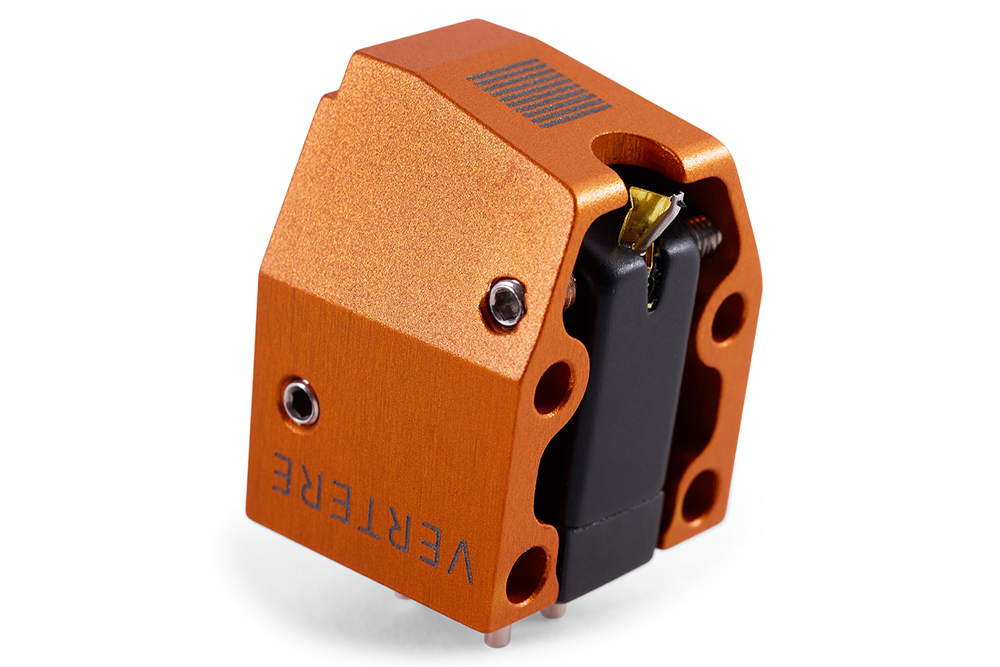
The cartridge is held on the tonearm headshell through Vertere supplied oversized thumb screws that fix into 2.5 mm diameter threaded holes on the orange body. Vibration control is further enhanced by the use of three small contact areas on top of the cartridge’s body- raised circles around the threaded holes and in the front centreline of the cartridge top.
The Sabre design and specifications include:
- Output: 4.0 mVolts Moving Magnet
- Input Load: 47 kohms
- Tracking Weight: 2.0 grams
- Frequency Response: 15 Hz to 25 kHz
- Channel Separation: 22dB
- Dynamic Compliance: 10 x 106cm/dyne
- Stylus Hyper Elliptical Diamond: 7.5 x 15.5 um
- Cantilever: Aluminium Alloy Tube
The Sabre comes with a stylus guard and the stylus assembly is interchangeable in case of damage or when the stylus is worn. Vertere set up the Sabre cartridge using special jigs to ensure the stylus parameters of azimuth and zenith are correct. Comprehensive instructions are included while a well-designed plastic carriage protects the Sabre cartridge during transport.
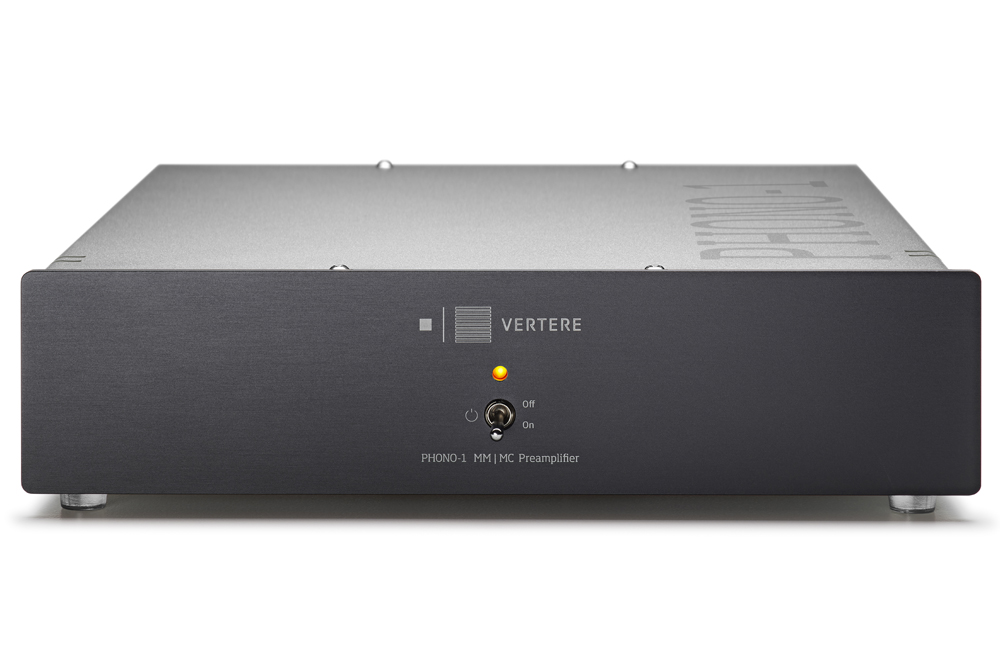
The second Vertere component on review the PHONO-1 MkII L MC/MM Preamplifier is available in orange front or black front (with very cool looking orange lettering) and silver. Vertere states that “The phono stage has to amplify a tiny signal a thousand-fold and equalise it back to the exact reverse of the RIAA curve!”
Three banks of setup switches, accessible from the underside, include 10 gain settings to suit the cartridge output, 15 resistance settings and nine capacitance settings to optimise the cartridge input impedance. The PHONO-1 MkII L comes with a trim pot screw driver to facilitate the movement of the tiny dip switches.
Gold plated PCBs with high quality mounted components ensure maximum performance. Internal circuit is double shielded with a three way phono PCB Ground Management switch to provide minimal earth hum. The switch is located on the back of the unit.
The PHONO-1 MkII L provides two earth points, one for the tonearm lead earthing and a second for chassis earthing. An IEC plug means that the end user can fit any power lead they wish, with the main on/off switch located at the back and a conveniently located on/off switch on the front panel for everyday operation. The IEC is a tight fit so that is good news for the end user with heavy power cords. Input and output for one tonearm is catered for with gold plated RCA plugs.
The front of the PHONO-1 MkII L is made from anodised aluminium 3 mm thick. The chassis is powder coated steel in a fetching light grey colour. The clear plastic feet have some natural grip and provide the unit with insulation against vibration. The component size is 200 mm wide 210 mm long and 55 mm high. Weighing approximately 2 kg the unit should easily fit the user’s rack system. It looks too cool to be hidden away!
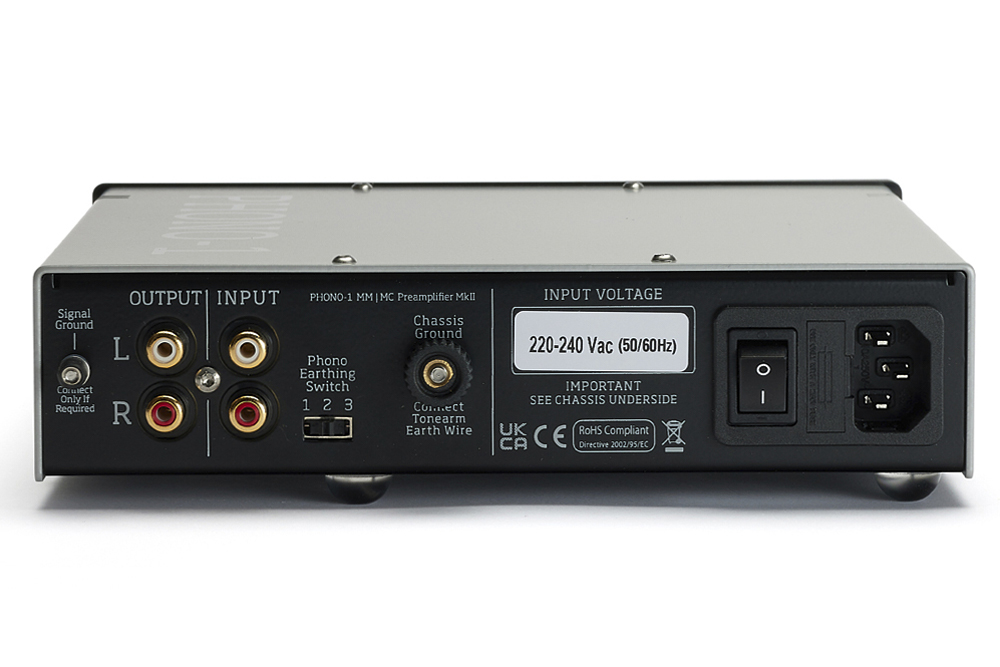
A very comprehensive user manual is provided which goes into great detail about the setup of cartridge input impedance and capacitance for Moving Coil and input resistance for Moving Magnet cartridges.
Specifications include the following:
- Type: MC/MM Preamplifier Main Phono Circuit on Separate Gold Plated PCB
- Power Supply: Linear Switchable Transformer on Separate Gold Plated PCB
- Gain Settings: 40.2dB to 62.8dB In 12 Steps
- Resistance: 47 kohms for MM, 78 ohms to 47 kohms for MC in 14 steps
- Capacitance: 100 pF and 430 pF for MM, 100 pF to 1.02 uF for MC in 9 steps
- Frequency Response: 20 Hz to 20 kHz +/- 0.2dB
- Noise: Less than -78dB
- THD+N: 0.03%
Listening
I installed the Sabre cartridge to an azimuth-adjustable headshell mounted to a venerable Fidelity Research FR64S tonearm. This should be a good combination due to the Sabre's relatively low compliance (stiffer suspension). Spinning duties were assigned to the Technics SP10 Mk3 turntable. I used the Vertere PHONO-1 MkII L with the Sabre after placing the dip switches in the appropriate positions. Double checking the switches are important so that the correct signal voltages are going to the preamplifier otherwise damage could occur if excess voltages are used and much cursing may result!
As readers may have noticed I pay a lot of attention to the cartridge set up and it was while talking to Touraj Moghaddam that he stated how critical is the nature of getting the tracking force correct, as the magnet inside the generator assembly becomes perfectly aligned with the fixed coil assembly.
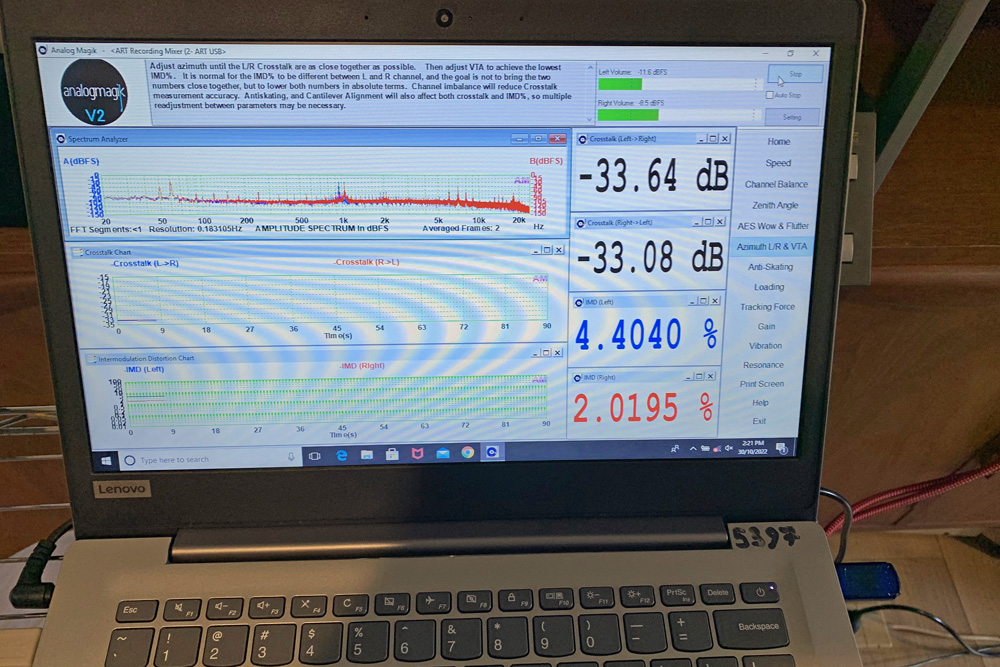
Using Wally Tractor alignment disc and the Analog-Magik Version 2 software systems I was able to achieve very low distortion figures and a really high channel separation of -33dB. Vertere quotes channel separation of greater than -22dB so that's a great result.
Of course, using the software system is only half the set up as listening to music should be the final means to tune the cartridge. The first record I chose is from the French label Harmonia Mundi HM 1050 La Folia originally released in 1982.
La Folia is a melodic composition originating in Spain with publications dating from the 1500s. La Folia takes its name from the word 'folly' or 'madness' and this refers to the peasants frenzied dancing to the music. This particular recording is noted for its unusual instrumentation and superb sound quality.
I was able to focus on the hand cymbals and tambourines to adjust ever so slightly the tracking force on the Sabre and I was rewarded with the music jumping out from the speakers. La Folia instruments include harpsicord, which sounded fast and detailed and recorders which sounded breathy and natural. Percussive instruments had clear impact with nice tones and subtle sound changes as the skins of the drum where struck and manipulated by hand.
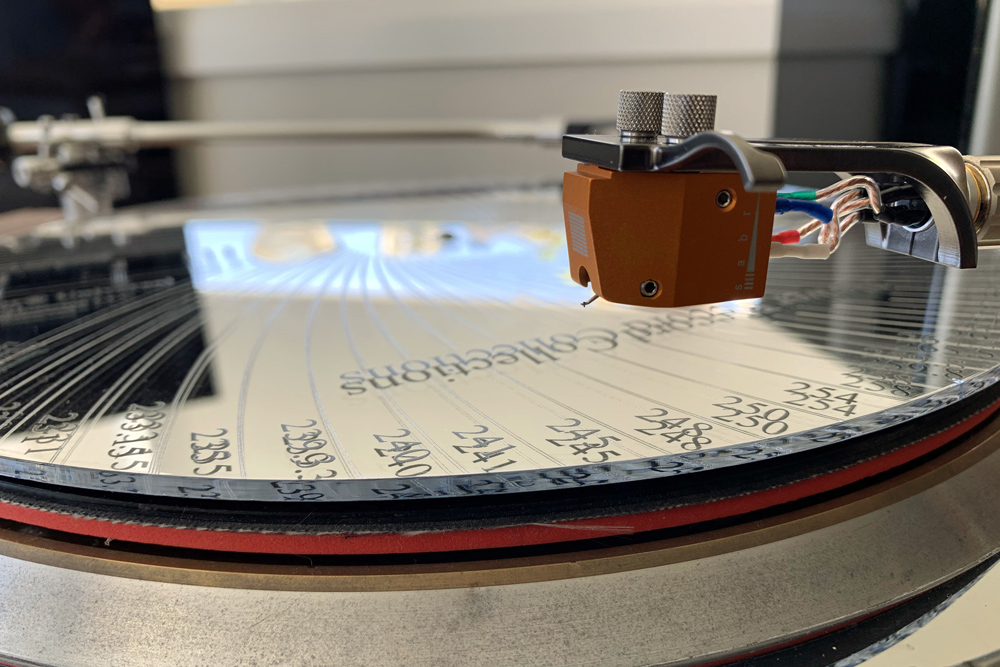
The Sabre was able to create believable acoustic sounds that where pinpointed within the wide soundstage. Xylophones sounded correct with micro-details expressed correctly. The tambourine came across with good clarity with just a slight loss of extension to the metallic ring that a more refined stylus shape, such as a fine line contact, may achieve. Despite this the hyper elliptical stylus certainly did not lack for musical details and subtlety.
La Folia Side 1 ends its mad run with the sound of a petrol lawn mower cutting grass and hitting stones, all this musical information is carried in the runout grooves before finishing with a harpsicord playing 'forever' in the locked groove! A fun and interesting composition that I would recommend to anyone who has a love for early musical styles.
Next on the turntable are the 'Little old band from Texas' ZZ Top and the album from 1981 El Loco which sees the band experimenting in the studio more than the previous album releases. Studio effects on vocals through manipulation of speed on Billy Gibbons’ singing adds interest to the already boogie-laden songs. “Tube Snake Boogie” starts with a crisp propulsive drum sequence then evolves into moto-blues rock. The soundstage is full from left to right and projects well into the room indicating that the channel separation is very good and the VTA is correct. Clean high string sounds from Gibbons’ guitar come across without etch and just the right amount of zing.
On “I Wanna Drive You Home” Mike Beard's drums sound fat and intensive – a great counterpoint to the subtle tambourine hits accompanying his playing. Gibbons’ guitar pedal effects produce lovely harmonics and that's something that seems to stand out with the Sabre cartridge; its ability to portray believable harmonic variations. Dusty Hills’ bass playing is well defined and easy to follow in the mix despite the busyness of the track. The track “Heaven, Hell or Houston” features bells ringing at the start and they sounded correct and full of harmonic details. At no point during listening to ZZ Top at high volume did I hear hum or excessive noise from the PHONO-1 MkII L. This is a very well built phono preamplifier!
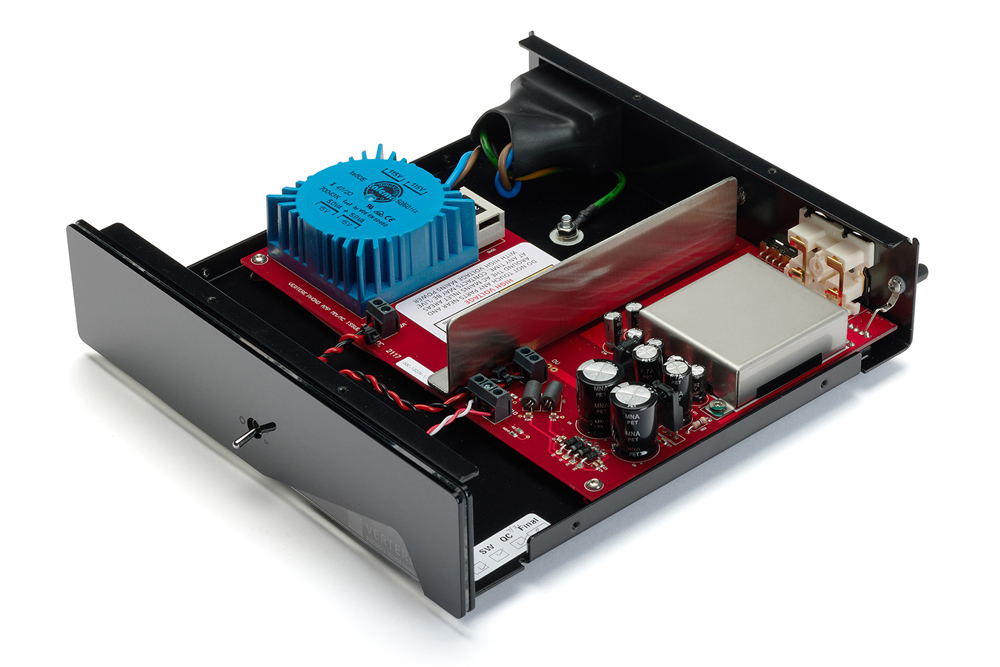
Following-on I wanted to play just the first track from Vangelis iconic Blade Runner movie soundtrack released on red coloured vinyl by Audio Fidelity in 2013. “Main Titles” features very low synthesizer bass notes and a thunder shot which was easily handled by the Sabre cartridge. Noises from the Esper photo analysis machine are locked into a central position on the soundstage, Deckard (Harrison Ford) commands the machine to move through grid positions until he finds the girl… “Give me a hard copy right there...” Deckard's voice is recorded in his apartment and the ambience and voice is eerily projected into my listening room. No wonder the Blade Runner soundtrack is as iconic as the film. High synthesizer notes seem to float over the rolling deep bass, the Sabre giving plenty of details across the full range of frequencies. Soundstage imaging is tall and wide with great projection in front of the speakers.
For some great relaxing jazz I played Ben Webster's Soulville released on the Analogue Productions label on two discs played at 45rpm. Released in 1957 Ben plays the tenor saxophone with backing from the Oscar Peterson Trio. Herb Ellis on electric guitar starts on the opening title track playing a soft melody before Ben Webster's saxophone arrives with presence and soft intensity (I know that sounds like a contradiction but that's the best I can describe it!). Oscar Peterson dabbles gently on the piano while his humming is captured on the microphones for prosperity. The Sabre handles the recording’s subtle micro-dynamics with aplomb, the tenor saxophone sounding rich in tone and details. The group gets a groove-on in the track “Late Date”, with piano, drums and double bass laying down the melody while Ben Webster blows a rich chorus over the top. Once again, Oscar Peterson is heard humming along to the track highlighting the Sabre's ability to pick-up the fine recording details. Plaintive wails from the float in front of the track, with the boys keeping a foot-tapping swing groove to the end. “Time on My Hands” has Ben Webster in his breathy slow mode and you can hear him drawing breath between notes, such is the stunning transparency of this seminal recording. Gorgeous playing and transcription from the Sabre MM cartridge.
Conclusion
My Mum says to me that great things come in small packages (she is five feet tall) and I have to agree with her especially in the case of the Vertere Sabre MM cartridge. It ticks a lot of the boxes that a high end cartridge (expensive) would do. Great soundstage full of detail and subtleties. Accurate instrumental tones without any due emphasis on any particular part of the frequency spectrum. Some cartridges seem to show up the midrange region, some the bass and some are a little too peaky in the treble for this listener's taste. The Sabre is a natural performer and I enjoyed the harmonics that were portrayed throughout the time that I was lucky enough to listen to it.
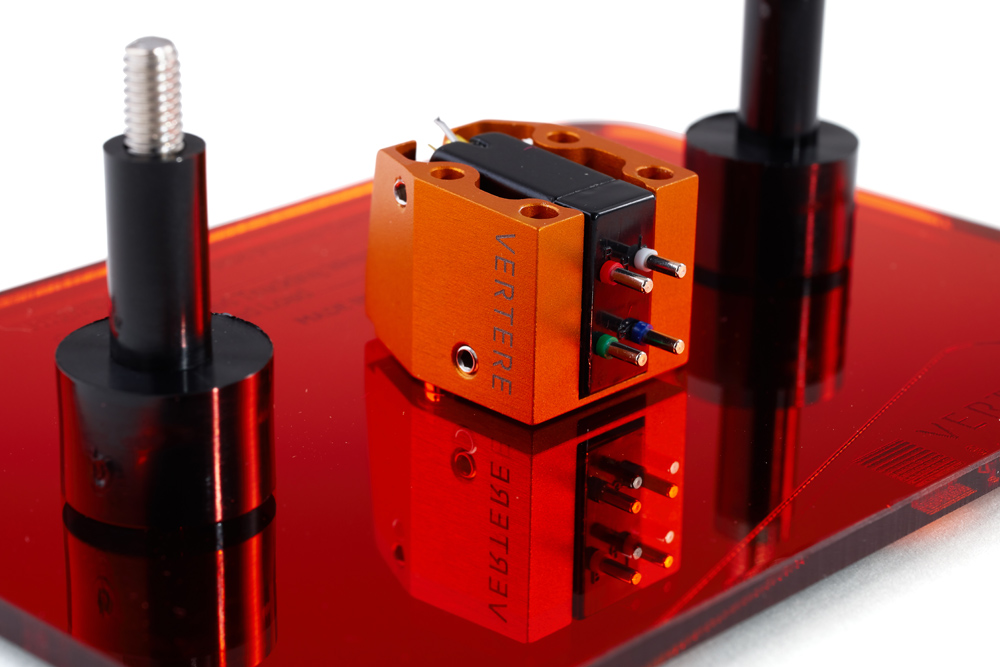
The hyper elliptical stylus is not fazed by vinyl surface noise and imperfections and does not draw attention to them. Yet it’s still able to resolve a lot of detail despite it being 'a mere elliptical'. The stylus is interchangeable with new ones and can be done by a confident hands-on owner or returned to the retailer for peace of mind.
The PHONO-1 MkII L MM/MC Preamplifier is a fully featured phono stage that allows the user to accurately tailor the control settings to suit the cartridge type being used. It is very quiet with no hum or noise heard even while using a low output moving coil. Featuring the most comprehensive earthing system that I have seen used on a phono stage is certainly a key to the low residual noise.
I particularly like the look of the PHONO-1 – it’s very fetching in Vertere Orange and is a compact unit that would easily fit in end users’ racking systems. Gold plated RCA fittings and gold plated internal PCBs will give the buyer confidence that the PHONO-1 MkII L will provide many years of trouble-free use. The five year warranty is proof that Vertere Acoustics is extremely confident in its manufacturing and quality control.
Buying both the Sabre MM cartridge and PHONO-1 MkII L means the customer has acquired a pairing which has been made from 'the ground up' to work in perfect unison. These two are highly recommended!
… Mark Busby
www.soundstageaustralia.com
Associated Equipment
- Speakers – Yamaha NS-1000M, custom 18-inch subwoofer
- Preamplifier – PS Audio BHK, Music First Audio step up transformer, EMIA two-box tube phono stage
- Amplifier – Yamaha B1, Musical Fidelity Tri-Vista 300, Leak Stereo 60, restored Leak Stereo 20
- Sources – Analogue:Technics SP10 mk3 turntable with Fidelity Research FR64S tonearm, Garrard 410 and SME V arm, Thorens TD 124 Mk1 with Woodsong bearing, SME 3012 silver wired tonearm, Music Maker 3 moving iron & DS Audio DS-E1 optical cartridges, Tube Sound Audio phono stage, Sansui TU-717 tuner. Digital: Marantz CD-94 MkII, Musical Fidelity A5 CD players
- Vertere Pulse-C, Revelation Audio Labs
Vertere Acoustics Sabre Moving Magnet Cartridge & PHONO-1 MkII L Preamplifier
Price: Sabre AU$ $1895 (Replacement Stylus AU$695), PHONO-1 MkII L AU$2695
Australian Warranty: Five Years
Australian Distributor: HiFi Collective
+61 3 9013 4334
www.hificollective.com.au
Vertere Limited
5 Oliver Business Park
Oliver Road, London NW10 7JB
England
+44 (0) 203 176 4888
www.vertereacoustics.com

